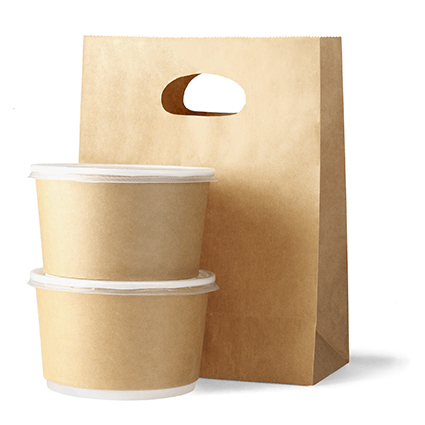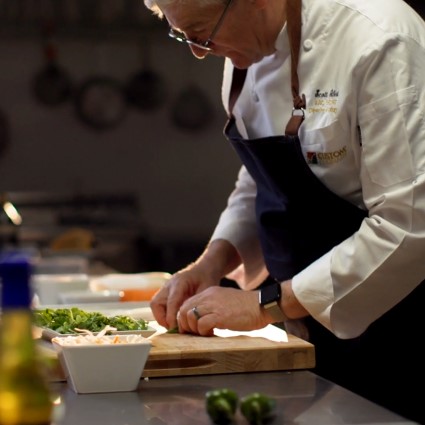This month, our highlighted trend is “How Convenient!”, a focus on enjoying restaurant-quality meals from the comfort of home. As Earth Day passed this month, we couldn’t help but think about how the dramatic and sudden necessity for takeout in 2020 likely interfered with many operators’ sustainability efforts. The shortage of options along with the need for cost-effective supplies was unfortunately not in Mother Nature’s favor; but this step backward hasn’t halted consumer and operator desire to do better for the planet. With 92% of restaurants and 60% of on-site operators offering takeout and 53% of adults saying purchasing takeout or delivery food is essential to the way they live, it’s a must to research earth-friendly takeout solutions. Your impact can grow exponentially if you take the next step to educate customers through messaging about your packaging choices.
Compostable materials check most of the boxes when it comes to decreasing environmental impact; those made of natural fibers can even be “soak-proof” and sturdy such as this assortment of to-go products from Good Start Packaging. However, compostable materials are only best for the planet if truly discarded of via compost bin or facility, or incinerated. While this practice is standard in some major cities, it may not be common knowledge for most of your guests. For this reason, don’t miss sharing sustainable messaging or instructions with your customer base. Whether it be through social media posts, restaurant signage, a QR code on a compostable sticker, or worded on takeout menus slipped into to-go bags, it’s important for consumers to understand the sustainability chain doesn’t end by eating from a compostable container—the final link is in their hands.
Familiarity and access to facilities may make your location(s) better suited for 100% recyclable materials. Even still, simple messages help consumers understand your sustainability efforts and how to properly dispose of packaging. Alecia Bakery in New York City, for instance, recently showed their commitment to sustainability by taking to Instagram to share their new packaging made of 100% recyclable, BPA-free plastic that could in turn be recycled. This may seem like a trivial post, but it gives your customers one more reason to support your business. “One step further” when it comes to recyclable materials comes down to repetition and clarification. Short messaging on boxes and bags reminds the customer of what they should do with their packaging, such as “I’m recyclable” or “Place this in the recycle bin.” But remember that even what seems recyclable may not be in its current state. If a plastic container is covered in salad dressing, it is not recyclable. If a cardboard pizza box is greasy, it is not recyclable. Wording such as “If I’m clean, please recycle me,” or “Rinse and Recycle,” will hopefully encourage consumers to do so properly.
Some other recent finds beyond disposable packaging to inspire your sustainability efforts. Disposable gloves are a must, especially with the spike of safety and sanitation concerns. The gloves from The Better Packaging Co. are a win-win. As described on their site, “I’m certified AS 5810 Home Compostable so you can dispose of me in your own backyard, or put me in with your commercial compost collection – a great option for cafes and hospitality providers who are also getting their compostable coffee cups and food scraps picked up for composting.” Last, this recent article from Foodservice Director entitled, “Packaging Remains a Hurdle as Operators Plan for the Future,” shares some great examples of what non-commercials are doing with reusable/returnable packaging in order to reduce waste.
As the industry recovers, we hope you can begin to shift your thinking towards long-term plans again and consider your next step in helping the planet. As for takeout, be sure to read through our How Convenient! trend spotlight; and when it comes to execution, you’ll find our Gold Label Ambient Portion Packs in ethnic sauces, classic sauces, and Asian broths very helpful in simplifying meal preparation while maintaining food safety, quality, and flavor. We can’t wait to see how you take on takeout.
CRAVING MORE? CHECK OUT THESE SIMILAR POSTS

The Latest Food Scene is Virtual
With delivery at an all-time high, it is no surprise that virtual restaurants are popping up on the food scene—or rather, popping up online.